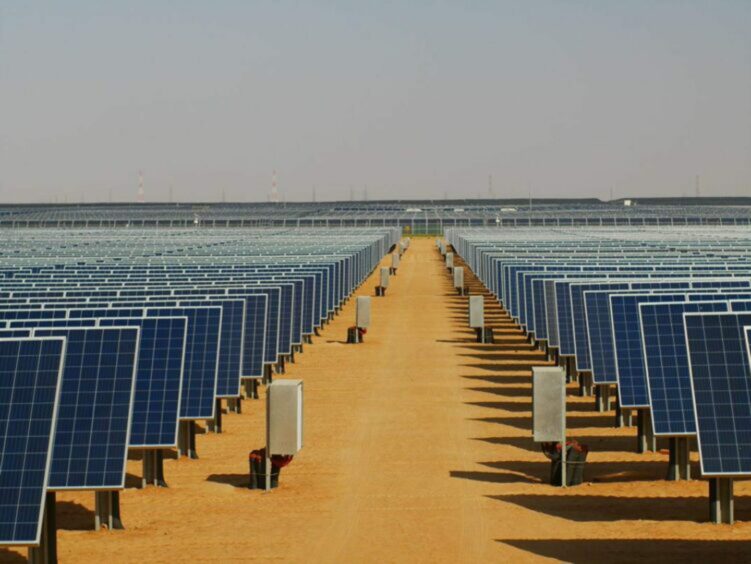
The International Energy Agency (IEA) said that global renewable capacity is expected to grow much quicker than previously forecast following the energy crisis.
- Energy security concerns caused by the war in Ukraine have motivated countries to turn to renewables, according to the IEA.
- Renewables will overtake coal to become the largest source of global electricity by early 2025.
- This will put the world closer to a pathway consistent with reaching net zero emissions by 2050.
Renewables improve energy security
The war in Ukraine represents a decisive moment for renewables in Europe, where governments and businesses are scrambling to replace Russian gas with alternatives. Concerns over energy security have incentivised countries to look at renewables such as solar and wind to reduce reliance on imported fossil fuels, whose prices have spiked dramatically.
Global renewable power capacity is now expected to grow by 2,400 gigawatts (GW) over the 2022-2027 period, an amount equal to the entire power capacity of China today, according to the IEA’s report Renewables 2022. This increase is 30% higher than the amount of growth that was forecast just in 2021, highlighting how quickly governments have thrown extra support behind renewables. The report found that renewables are set to account for over 90% of global electricity expansion by 2027, overtaking coal to become the largest source of global electricity by early 2025.
Looking at Europe specifically, the amount of renewable power capacity added in Europe in the 2022-27 period is estimated to be twice as high as in the previous five-year period, due to a combination of energy security concerns and climate ambitions. An even faster deployment of wind and solar photovoltaic could be achieved if the bloc’s Member States were to rapidly implement a number of policies, including streamlining and reducing permitting timelines, improving auction designs and providing better visibility on auction schedules, as well as improving incentive schemes to support rooftop solar.
Elsewhere, China, the United States and India are implementing policies and introducing regulatory and market reforms more quickly than previously planned, also to address the energy crisis. As a result of its recent 14th Five-Year Plan, China is expected to account for almost half of new global renewable power capacity additions over the 2022-2027 period. Meanwhile, the US Inflation Reduction Act has provided new support and long-term visibility for the expansion of renewables in the US.
Reducing emissions and developing new markets
Utility-scale solar PV and onshore wind are the cheapest options for new electricity generation for most countries. Global solar PV capacity is set to almost triple over the 2022-2027 period, surpassing coal and becoming the largest source of power capacity in the world. Residential and commercial rooftops are expected to see more solar panels on residential and commercial rooftops, according to the IEA, which will reduce energy bills for consumers.
Global wind capacity almost doubles in the forecast period, the report said, with offshore projects accounting for one-fifth of the growth. Together, wind and solar will account for over 90% of the renewable power capacity that is added by 2027.
The report sees emerging signs of diversification in global PV supply chains, with new policies in the US and India expected to boost investment in solar manufacturing by as much as $25 billion over the five years to 2027. While China remains the dominant player, its share in global manufacturing capacity could decrease from 90% today to 75% by 2027.
Total global biofuel demand is set to expand by 22% over the period being examined. The US, Canada, Brazil, Indonesia and India make up 80% of the expected global expansion in biofuel use, with all five countries having comprehensive policies to support growth.
The report also lays out an accelerated case in which renewable power capacity grows a further 25% on top of the main forecast. In advanced economies, this faster growth would require addressing several regulatory and permitting challenges and quicker penetration of renewable electricity in the heating and transport sectors. In emerging and developing economies, it would mean addressing policy and regulatory uncertainties, weak grid infrastructure and a lack of access to affordable financing that are hampering new projects.
“Renewables were already expanding quickly, but the global energy crisis has kicked them into an extraordinary new phase of even faster growth as countries seek to capitalise on their energy security benefits. The world is set to add as much renewable power in the next 5 years as it did in the previous 20 years,” said IEA executive director Fatih Birol. “This is a clear example of how the current energy crisis can be a historic turning point towards a cleaner and more secure energy system. Renewables’ continued acceleration is critical to help keep the door open to limiting global warming to 1.5 °C.”
Recommended for you
